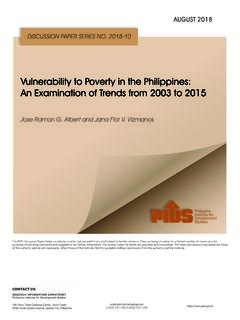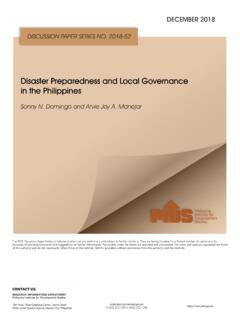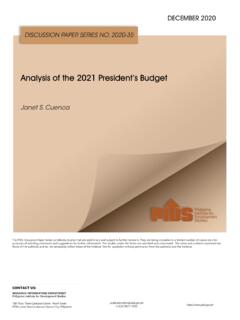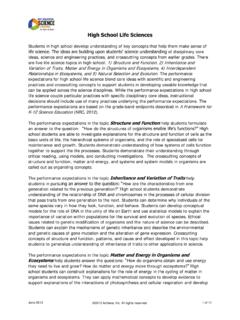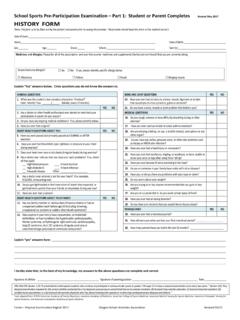Transcription of On the Employability of the Senior High School Graduates ...
1 DISCUSSION PAPER SERIES NO. 2020-40 DECEMBER 2020On the Employability of the Senior high School Graduates : Evidence from the Labor Force SurveyAniceto C. Orbeta Jr. and Maropsil V. PotestadThe PIDS Discussion Paper Series constitutes studies that are preliminary and subject to further revisions. They are being circulated in a limited number of copies only for purposes of soliciting comments and suggestions for further refinements. The studies under the Series are unedited and unreviewed. The views and opinions expressed are those of the author(s) and do not necessarily reflect those of the Institute. Not for quotation without permission from the author(s) and the US:RESEARCH INFORMATION DEPARTMENTP hilippine Institute for Development Studies18th Floor, Three Cyberpod Centris - North Tower EDSA corner Quezon Avenue, Quezon City, 8877-4000 On the Employability of the Senior high School Graduates : Evidence from the Labor Force Survey Aniceto C.
2 Orbeta Jr. Maropsil V. Potestad PHILIPPINE INSTITUTE FOR DEVELOPMENT STUDIES December 2020 Abstract Continuing from the Institute s 2018 study on the SHS and the labor market which interviewed graduating SHS students and HR managers of firms about their perspectives on the prospects for employment, this study intends to gauge the actual performance of the SHS Graduates in the labor market. Entry into the labor market is considered as one of the possible exits of SHS Graduates . Given the first batch of SHS Graduates in April 2018, this study utilizes eight rounds of Labor Force Survey (LFS) from July 2018 to April 2020. Labor market outcomes of SHS Graduates (G12) are compared to their peers - G10 and second-year college completers. To improve comparability, the paper uses a multi-valued treatment effect estimation ( , Inverse Probability Weighting with Regression Adjustment (IPWRA)) with each of the education outcome as treatment and utilizing individual and household characteristics.
3 The results confirm the results in the earlier study that only a small proportion (a little over 20%) enter the labor force and most of them (more than 70 percent) continue with their education. The estimations also find a mixed result with SHS Graduates sometimes performing better and sometimes poorer relative to their peers in terms of labor market outcomes. These suggest that there is a need to re-examine employment and entrepreneurial objective SHS given the expressed and realized propensity of SHS Graduates to continue with their education rather than entering the labor market. There is also a need to continue to examine and validate the effectiveness the work preparation component of the SHS curriculum. Furthermore, there is a need to continue working with employers informing and demonstrating to them what SHS Graduates can do and eventually clearly defining the right niche for them in the labor market.
4 Finally, this calls for continued close monitoring and generating empirical evidence to help understand the role of SHS Graduates in the labor market. Keywords: Senior high School , K to 12, basic education, labor market, Employability of SHS Graduates , multivalued treatment effects Table of Contents 1. Introduction .. 5 2. Review of related studies .. 6 3. Labor force participation and School attendance of the youth in neighboring countries .. 7 4. Methodology and data .. 7 Outcomes of interests .. 8 Data .. 8 Identifying the cohort of interest .. 8 Estimation method .. 9 Independent variables .. 10 5. Empirical results .. 11 Descriptive statistics .. 11 Descriptive statistics of analysis variables .. 14 Pre-estimation analysis .. 15 Estimation results .. 17 6. Summary and recommendations.
5 19 Summary .. 19 20 7. References .. 21 8. Appendices .. 22 Appendix 1a. Descriptive Statistics of Analysis Variables: Outcome-Employment .. 22 Appendix 1b. Descriptive Statistics of Analysis Variables: Outcome-Underemployment .. 23 Appendix 1c. Descriptive Statistics of Analysis Variables: Outcome-Visible underemployment .. 24 Appendix 1d. Descriptive Statistics of Analysis Variables: Outcome-Hours worked .. 25 Appendix 1e. Descriptive Statistics of Analysis Variables: Outcome-Basic pay per day .. 26 Appendix 1f. Descriptive Statistics of Analysis Variables: Outcome-Wage and salary workers .. 27 Appendix 1g. Descriptive Statistics of Analysis Variables: Outcome-Self-employment 28 Appendix 1h. Descriptive Statistics of Analysis Variables: Outcome-In industry .. 29 Appendix 2a. Covariate Balance: Outcome-Employment.
6 30 Appendix 2b. Covariate Balance: Outcome-Underemployment .. 30 Appendix 2c. Covariate Balance: Outcome-Visible underemployment .. 31 Appendix 2d. Covariate Balance: Outcome-Hours worked .. 31 Appendix 2e. Covariate Balance: Outcome-Basic pay per day .. 32 Appendix 2f. Covariate Balance: Outcome-wage and salary workers .. 32 Appendix 2g. Covariate Balance: Outcome-self-employment .. 33 Appendix 2h. Covariate Balance: Outcome-in industry .. 33 Appendix 3a. Kernel density plots of estimated propensity scores for different education cohorts: Outcome - employment .. 34 Appendix 3b. Kernel density plots of estimated propensity scores for different education cohorts: Outcome - Underemployment .. 35 Appendix 3c. Kernel density plots of estimated propensity scores for different education cohorts: Outcome Visible underemployment.
7 36 Appendix 3d. Kernel density plots of estimated propensity scores for different education cohorts: Outcome Hours worked .. 37 Appendix 3e. Kernel density plots of estimated propensity scores for different education cohorts: Outcome Basic pay per day .. 38 Appendix 3f. Kernel density plots of estimated propensity scores for different education cohorts: Outcome Wage and salary .. 39 Appendix 3g. Kernel density plots of estimated propensity scores for different education cohorts: Outcome Self-employed .. 40 Appendix 3h. Kernel density plots of estimated propensity scores for different education cohorts: Outcome In industry .. 41 Appendix 4a. Full IPWRA estimation results .. 42 Appendix 4b. Full IPWRA estimation results (Continued) .. 45 List of Tables Table 1. Cohort of interest .. 8 Table 2.
8 Distribution of the analysis sample by education completed and survey round .. 11 Table 3. Averages of outcomes for the four rounds .. 12 Table 4. School attendance of the cohorts by LFS round .. 14 Table 5. Descriptive statistics of analysis variables .. 14 Table 6. Balance analysis: In labor force .. 15 Table 7. IPWRA estimation results .. 18 Table 8. Average LFP by education of parents, LFS July 2018-April 2020 .. 19 List of Figures Figure 1. Labor force participation rate, 15-24, ASEAN .. 7 Figure 2. Enrollment rate in upper secondary, ASEAN .. 7 Figure 3. Labor market outcomes across the survey rounds .. 12 Figure 4. Kernel density plots of estimated propensity scores for different education cohorts: Outcome, in the labor force .. 16 5 On the Employability of the Senior high School Graduates : Evidence from the Labor Force Survey Aniceto C.
9 Orbeta, Jr. and Maropsil V. Potestad 1. Introduction The Senior high School (SHS) component of the K to 12 program is designed to cover the three possible exits: toward (i) higher education, (ii) middle-level skills development, and (iii) employment or entrepreneurship. The employment or entrepreneurship exit justifies preparing SHS Graduates for the labor market besides preparing them for higher education. With the first batch of its Graduates coming out only in 2018, the literature on the Employability of the SHS Graduates in the Philippines is expected to be limited. This study addresses this gap. In 2018, the Institute started to unpack the prospects of SHS Graduates in the labor market by examining the self-assessment of Grade 12 graduating students and the views of HR managers of firms (Orbeta et al.)
10 2019). The study provided a detailed description of both the demand and the supply aspects of the emerging SHS Graduates in the labor market. Interestingly, the results revealed that these students are not greatly confident that they will get a job after graduating from SHS. This accompanied with a belief that the firms prefer college Graduates over them. Moreover, that despite the initiatives of the program to promote its employment objective, three quarters of the Grade 12 students plan to proceed to higher education, and that most firms are not ready to hire SHS Graduates for various reasons. Briefly revisiting the employment prospects taken from the results of the 2018 study, most of the students believe that employers look at educational qualification, technical skills, soft skills, and attitude in hiring.


